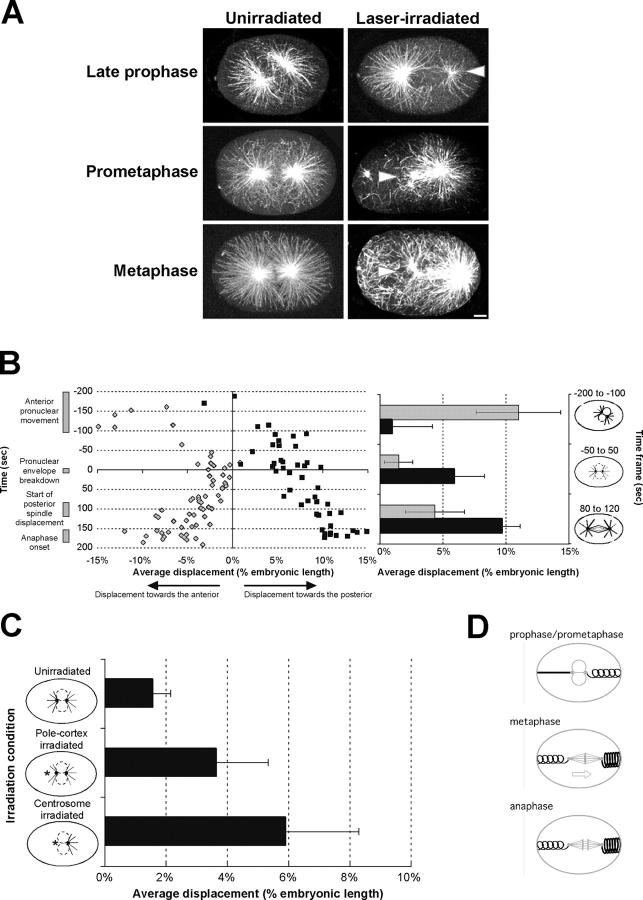Figure 3.
Laser-mediated disruption of microtubule organization allows the estimation of pulling forces throughout the cell cycle. (A) Two-dimensional reconstruction of multiple confocal sections of embryos fixed and stained for α-tubulin. The centrosomes indicated by arrowheads in the right panels were irradiated before fixation. Laser irradiation specifically disrupts microtubule organization at the targeted centrosome, leaving the unirradiated centrosome largely intact. Bar, 5 μm. (B) Map (left) and quantification (right) of centrosome displacement after OICD. Displacement was determined for anterior centrosomes after posterior centrosome irradiation (gray diamonds and gray bars) and for posterior centrosomes after anterior centrosome irradiation (black squares and black bars). In the right panel, displacements were averaged for various phases of the cell cycle. The timing of cell cycle events was determined according to previously reported values and matches observations made by DIC optics (Labbé et al., 2003). Error bars represent SD over, from top to bottom, 6, 4, 19, 16, 13, and 8 embryos, respectively, for each case. (C) Posterior centrosome movement quantified following no irradiation, laser irradiation of a region between the anterior centrosome and the anterior cortex, or laser irradiation of the whole anterior centrosome. A schematic of the procedure for each condition is shown on the left, with the region irradiated marked with an asterisk. Error bars represent SD over, from top to bottom, 8, 8, and 16 embryos, respectively, for each case. (D) Conceptual model depicting the various types of forces that act on the centrosomes throughout the first mitosis of the early C. elegans embryo. In this model, tethering forces are represented as lines, whereas pulling forces are depicted as springs. At late prophase/prometaphase, the pulling force present in the posterior of the embryo is counteracted by the tethering force in the anterior, thereby preventing posterior spindle displacement. During metaphase, the tethering force in the anterior changes to a pulling force.

